Finding ‘shed' antlers (with your dog?)
Recently I came across quite an interesting article in the magazine “Conservationist” by the DEC of New York State (see link below). It tells about how a woman is training her Golden Retriever to find antlers. Yes, whitetail deer antlers. Whitetail bucks shed their antlers every year between the end of December and the end of January.
So why are they treasures to hunt for? Well, like any treasure, they are rare and difficult to find, and they are highly valued by animals and people alike! So what is going on here?
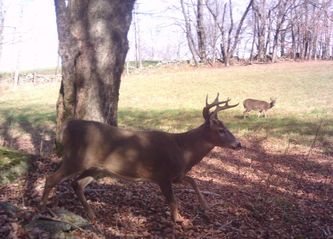 Whitetail 8 point buck and doe
Whitetail 8 point buck and doe Serious hunters scout their hunting spots well before the season opens, looking for tree 'rubs', scent scrapes, buck scat and frequently used trails and know this all too well. Many can tell you stories of how large bucks they tracked before opening day, vanished after the first gunshot of Opening Morning rang through the landscape, never to be seen for the rest of the season.
Male deer (bucks) grow antlers to impress the female deer (does). Much like the plumage of a peacock or enlarged muscle mass in many species, the males strut their genetic fitness to reproduce. These are known as ‘secondary sexual characteristics’. Of course, as with most horned animals, they are also used to fight with other male deer, to fight for the dominant ‘alpha’ male status to win the chance to breed with any does that are coming into estrus (fertile).
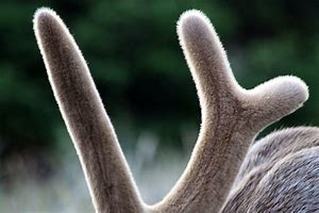
In the spring - usually in April when the antlers start growing, they are covered with ‘velvet’. The velvet is fed by blood, which is carried in the outer layer. Much like a tree grows larger each year by adding external layers of new growth, so buck antlers get larger each year, but unlike trees, they must start from scratch each year. Velvet is warm with fine ‘hairs’ and a waxy feeling. Deer need both protein and minerals to grow antlers and damages to these growing antlers can lead to asymmetric racks in mature bucks (not prized by hunters). The young male deer (button bucks) appear to have little “buttons” on the top of their skull before they start the growth, which can be very rapid,- i.e. ¼ inch a day.
At the end of summer - when the antler growth ends - bucks will rub the velvet off using small trees. The higher the rub is on the tree and the deeper the gouges in the bark, the bigger the buck is! Hunters scout these ‘rubs’ early in the season to asses the size of the local bucks and plan their hunts.
 Well gnawed buck skull
Well gnawed buck skull Well they are hard to find because animals and people compete for them! Antlers provide an excellent source of nutrients and minerals for small animals. The blood soaked velvet has left a fragrant bouquet of chemicals behind on the now dry bone and everyone in the forest wants to eat. Mice, chipmunks and squirrels get calcium by gnawing on shed antlers and animal bones. They need the calcium and strengthen their teeth by gnawing on bones. Porcupines, foxes, coyotes, bears and domestic dogs will also eat them for essential minerals. In this photo of a skull I found in our woods, you can see how many animals were nourished by this one buck. What was probably a rack comprised of 6 points (tines), has been gnawed down to just four. Close examination of the tines shows the interior nutrient rich bone marrow and at least 3 different size teeth that feasted on them. The two small holes in the forehead are where scent glands emerge which the buck uses to scent mark tree branches around his territory and leave messages of his biological fitness. The thinner and more fragile sinuses and snout of the skull probably were crushed and consumed by foxes, coyotes or domestic dogs.
The next hunting season, he can use this shed to ‘rattle’ in other large bucks who are now big enough to challenge him. It is a call to battle any large buck looking to mate will find irresistible.
Artists and craftsmen prize the sheds as well. They may make tool handles, jewelry, dream catchers or art from them. I've seen larger sheds made into light fixtures or incorporated into folk art furniture!
Here you can see a set of earnings a friend made from cross sections of a European Red deer antler. You can see the rich lattice work of the internal bone marrow that is so sought after by animals. She also made the handle for this hunting knife she gave to me as a gift from the same animal she harvested.
If you have a dog and train it to find shed antlers, it is a great winter activity that makes you and the dog happy.
If you’d like to see more about how she trains her dog to hunt for these very specific woodland treasures, the link is: Horn Hunting: www.dec.ny.gov/docs/administration_pdf/0217consmag4web.pdf.
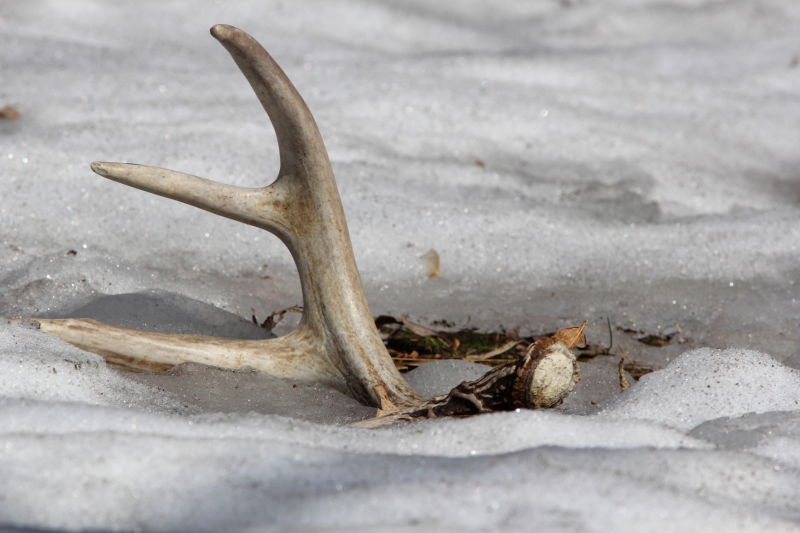
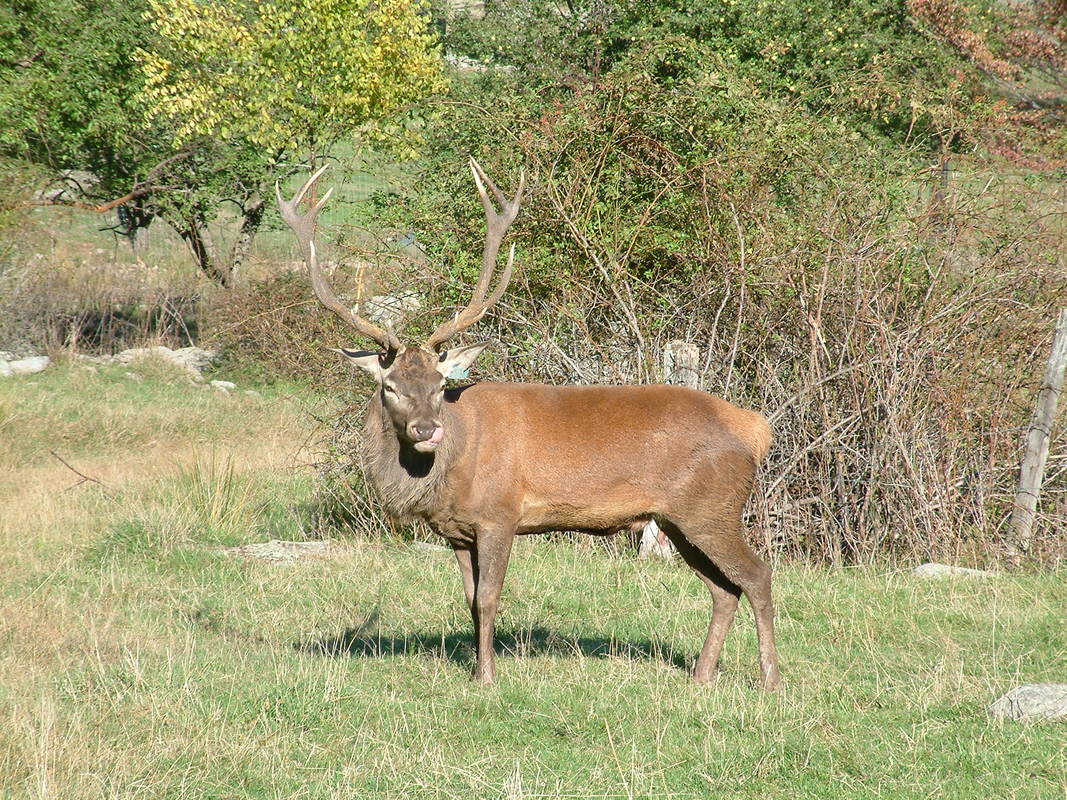
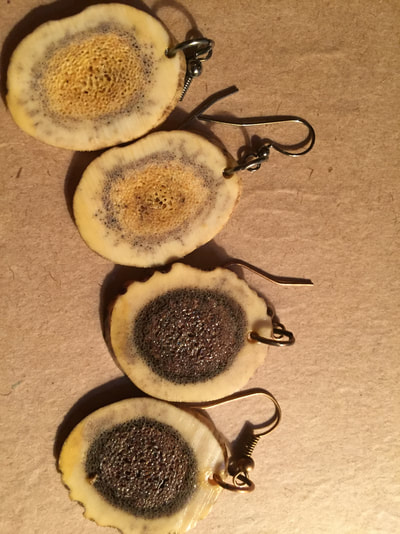
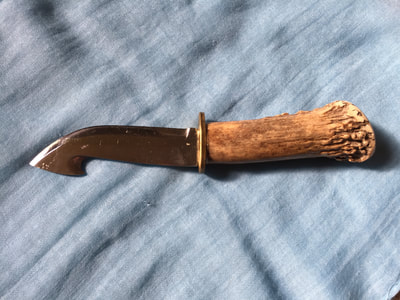
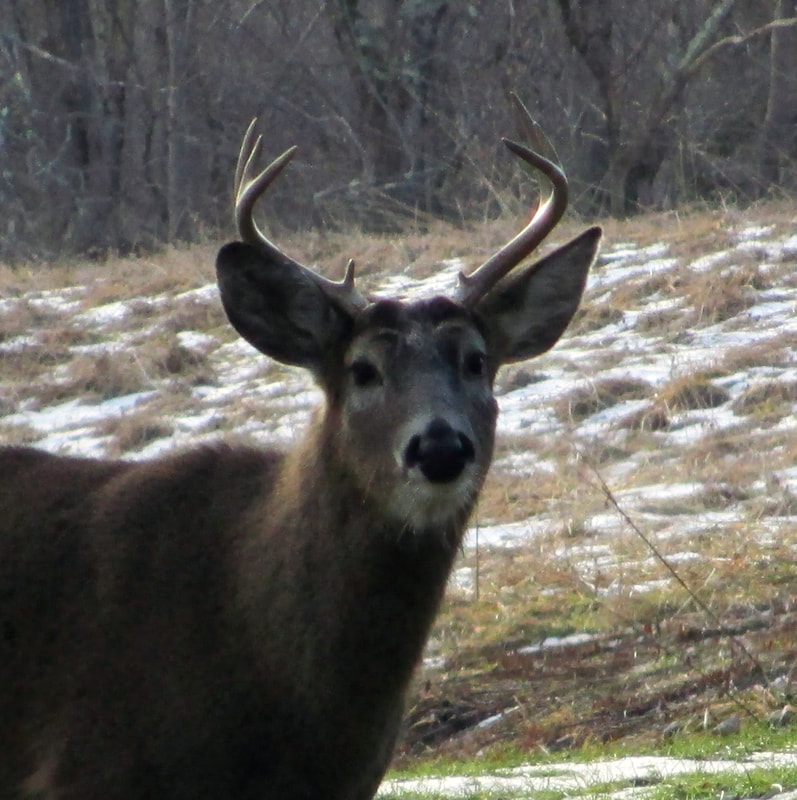
 RSS Feed
RSS Feed